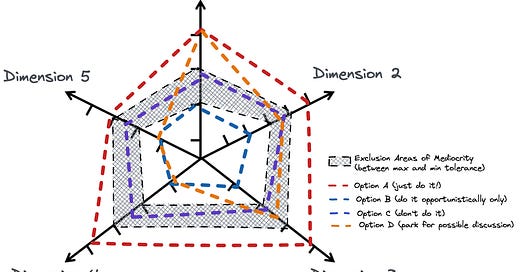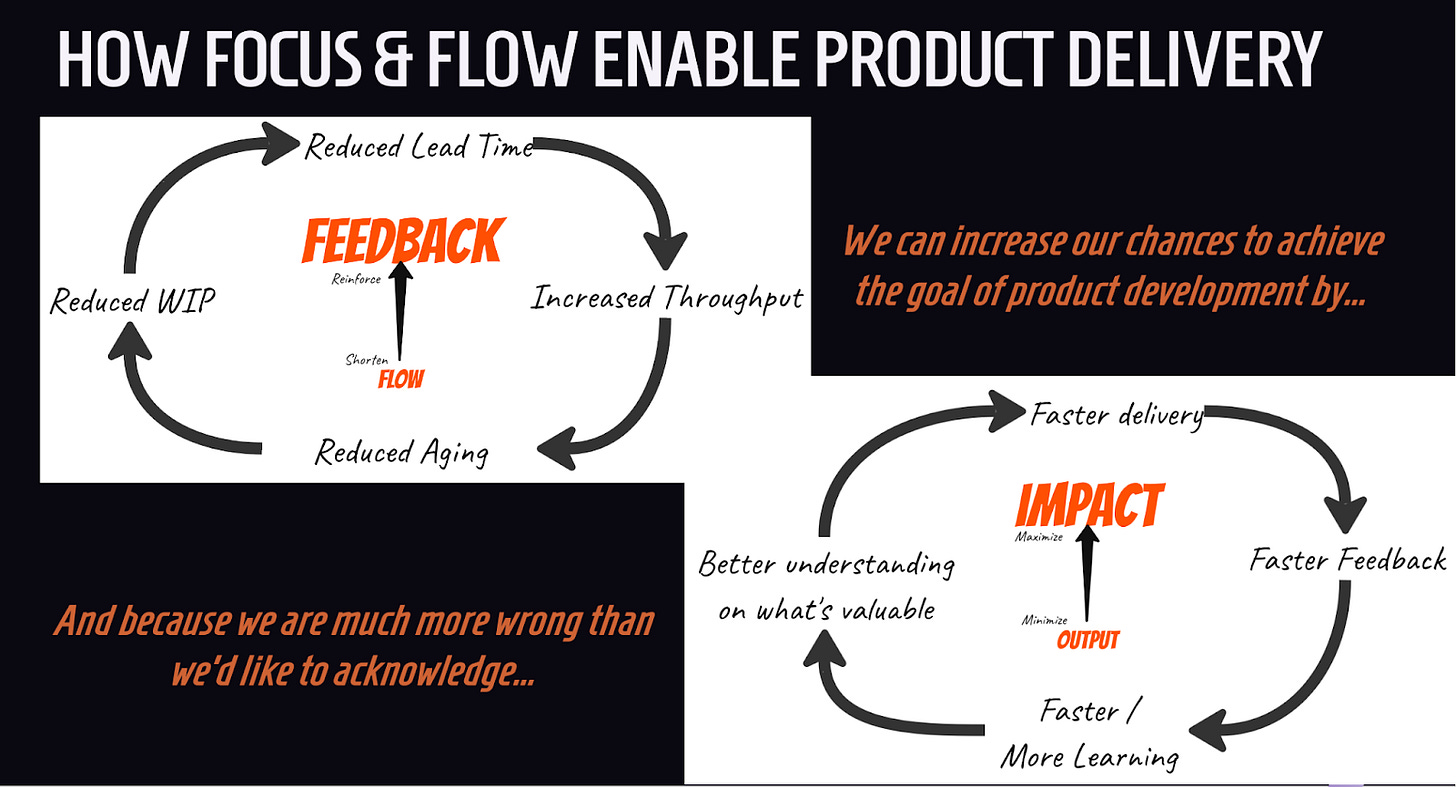Prioritization: bet to learn and risk profile
"Thinking in Bets" by Annie Duke is a highly recommended book for reframing decision-making, and accepting reality for what it is: more of a Poker game than a Chess match (meaning, more random and prone to luck than highly correlated to skill). I used to use quite often the statement that we are more wrong than we'd like to believe, as a way to point out the need for a shortened feedback loop and learn factually. There's still a lot of truth to that, particularly in the context I typically use it, but Annie Duke's work has convinced me that there's a more accurate version:
We don't achieve the outcome we thought we would more often than we'd like to admit.
It sounds nuanced but better acknowledges that chances are the gap we are seeing (in Stephen Bungay's work, The Art of Action, which I talked about here a couple of weeks ago, that would be an effect gap) might be subject to cheer luck, and completely disconnected to the quality of our decision. Knowing how to make sense of how likely what we see play out is due to the quality of our decision (skill) or not (luck) is possibly the ultimate game changer to unlock better decision-making.
But the actual theme for today's post is rather figuring out priority. And from that sense, while it's somewhat liberating to know it's all fundamentally a bet, I don't believe anyone in a sane mind would be fine just to be fully subject to luck or circumstances. So the goal to improve decision-making in how we prioritize is not only a valid one, it's likely a differentiating one.
Here are two complementary views to the matter, which I will then move to slightly further expand next:
Increase the chance to get the outcome of what you are currently doing by betting to learn.
Increase the chance to get better outcomes over time by leveraging risk profile as a means to deliberately filter options upfront.
On betting to learn, if you have been following my writing for a while, you may have already connected the dots of how often I like to reframe the whole concept of flow as a means to enable product development by shortening the feedback loop and thus learning faster. The possible additional good news is that whenever our bet turns our way, we have also shortened time to market by focusing on flow: win-win.
That brings me nicely to how to increase our chances of getting better outcomes over time, where I would like to bring an elegant technique that has emerged in the Kanban community: the use of Kiviat charts in prioritization. This means modeling a risk profile with dimensions that matter in the specific context of an organization, product, or whatever system we want to apply the technique on.
I have explored typical examples of risk dimensions for prioritization previously here, where I have alluded to the technique, but I realized I never further expanded on it. Time to correct that miss… Since, in my humble opinion, the real power of the technique is to deliberately use it as filtering with a risk lens.
It all starts with defining what dimensions to model in the risk profile using Kiviat charts and defining the gradation (the levels in the scale) in such a way that the perception of risk in a given dimension is higher closer to the center. Once we adopt that way of framing, and map out our current options, we can make sense of things like illustrated below when we map out our current options.
Notice the deliberate use of filtering that essentially avoids mediocre risk profiles. That might look counterintuitive, but it makes sense if you think about it for a moment or so more:
If you have options that are low risk, delivering (most likely) something like incremental value, and have higher risk with the potential of much more fundamentally differentiating value, why would you focus on so-so options, with arguably too much risk for the possible outcome!?
Being intentional about that might also be a way to place bets strategically, just like we often do in other contexts where we are dealing with risks, such as in our investment portfolio: putting most of our resources in fairly low-risk options, but not losing the opportunity to every now and then placing some resources in a higher risk/higher potential one.
By Rodrigo Sperb, feel free to connect, I'm happy to engage and interact. If I can be of further utility to you or your organization in getting better at working with product development, I am available for part-time advisory, consulting or contract-based engagements.




